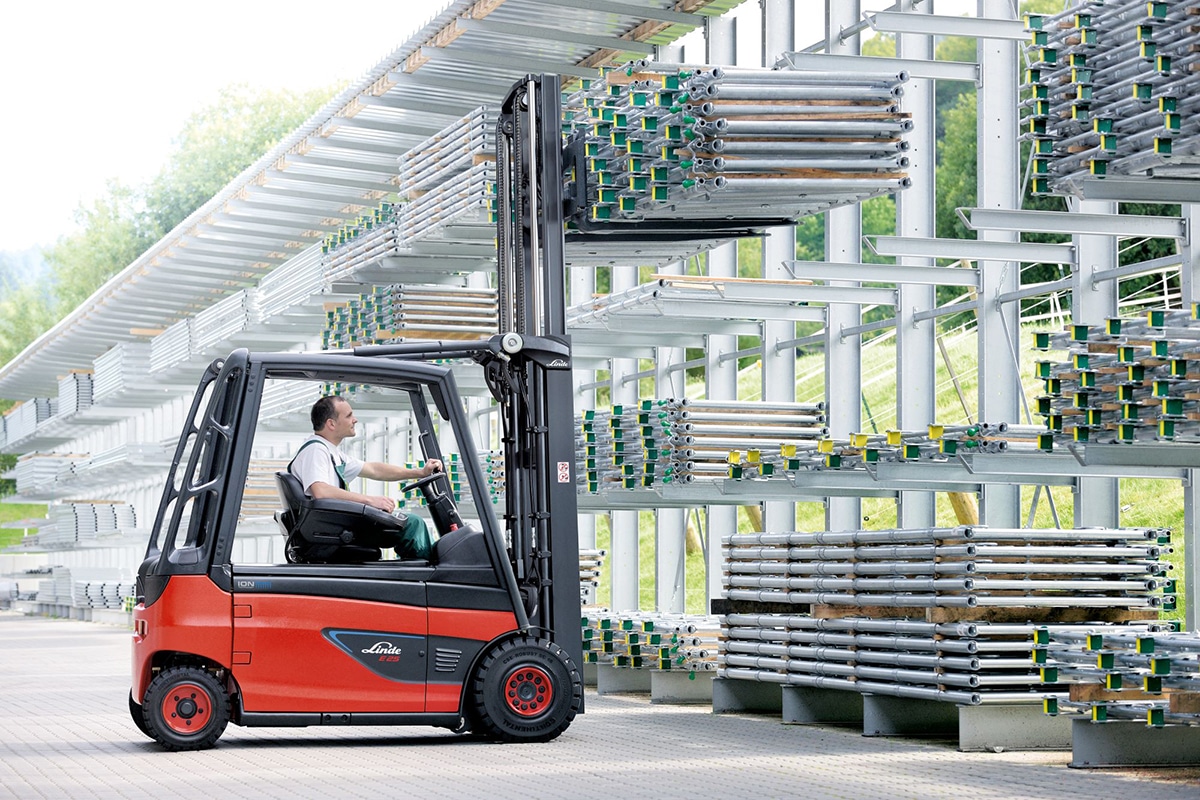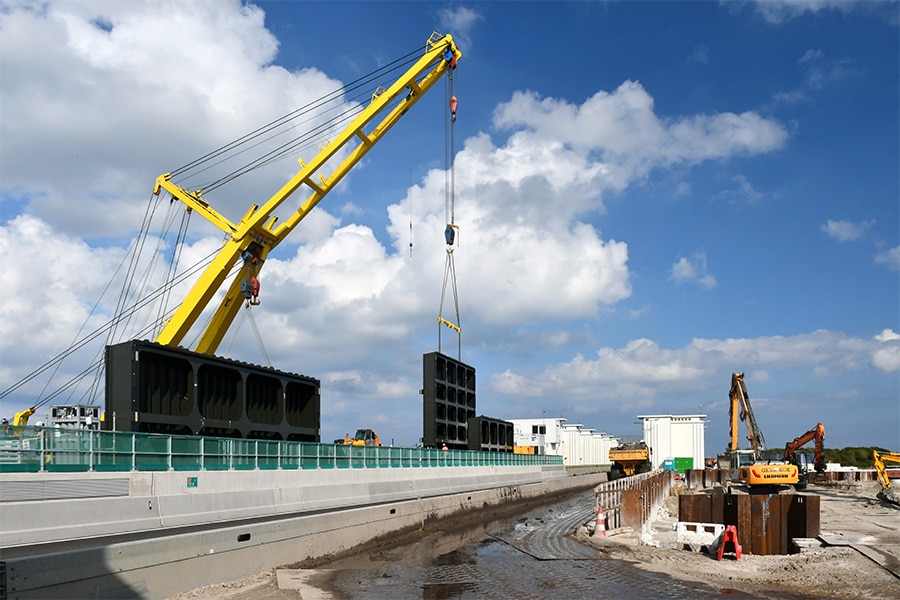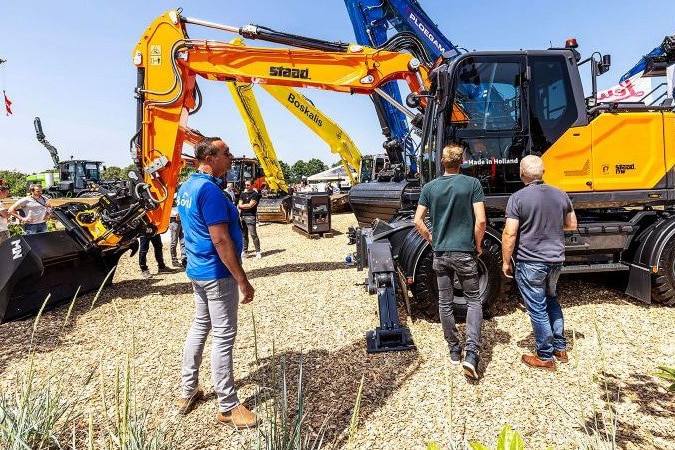
The Old Lady has had a rejuvenation cure!
It is Monday morning, August 19. At 4:30 I join the select company in the marquee erected especially for the occasion, next to the entrance to the Maas Tunnel in Rotterdam. The atmosphere: a slightly tense exuberance. Today, after two years of intensive labor and preparation that began together with the construction partner as early as the end of 2015, the renovated Maas Tunnel will finally be officially put back into operation.
Henriëtte Edens, Manager of Communications Maastunnel at the Municipality of Rotterdam, looks feverishly at her watch. "We have a tight schedule. At 5 a.m. the antique RET bus arrives, carrying 22 Rotterdammers and their guests who won a competition. They may symbolically be the first to use the renovated tunnel. After they pass through the tunnel again on the way back, we welcome them with a festive breakfast in the tent. Then the final preparations can be made by our people to open the tunnel to morning traffic at 6 a.m."

The wall covering consists of 614,000 wall tiles. (Image: Carel van Hees)
A Rotterdam icon fully restored to its former glory
Ask a true Rotterdammer about his or her city and one does not get out of talking. The pride that every Rotterdammer carries in their heart is contagious. The same pride radiates from the faces of the 44 lucky people who arrive on the antique bus before they are allowed to hail the tunnel. Roaring, the bus stands at the red traffic lights. Glances full of expectation are fixed on the tunnel entrance. There is singing, under the inspiring direction of Loes Luca, in an unadulterated Rotterdam manner. Then the clock ticks 5:15 a.m., a whistle sounds and the bus sets off, roaring and smoking, toward the mouth of the tunnel. Beside me, Henriëtte Edens breathes a sigh of relief. "There they go, right on time," sounds slightly emotional.
The same emotion can also be felt by the team members of the Maastunnel working group present and those involved in the construction consortium present. Is there life after the tunnel? Edens: "Good question, it feels a bit like we are all falling into a hole. Remember that we have been preparing with a huge team since the end of 2015. On the part of the Municipality of Rotterdam and from the construction partner, a total of more than 500 people have been involved in this project. A lot of consultation and communication had to take place; our department really gave everything it could. We talked to the people of Rotterdam, asked them how they could help us. We discussed detour routes with the neighborhood. Gratefully, we made use of social media, using Facebook, Twitter, YouTube and Instagram to keep everyone informed. In text and images. This generated unprecedented engagement and gave us a lot of support and good input. This intensive form of communication with Rotterdammers created involvement and understanding for the project. And the best thing of all: the Maas Tunnel has not only been restored to its full glory, it is once again a true city icon that every Rotterdammer can be proud of." Edens is still impressed with the partnership between the Municipality of Rotterdam and the contractor combination, consisting of TBI companies Croonwolter&dros BV and Mobilis BV. "The noses were in the same direction and the passion with which work was done was unanimous. Let this way of working be a blueprint for future projects!"

Henriëtte Edens and Benjamin Mooijaart look back on a wonderful collaboration.
The Maas Tunnel, a national monument with challenges
Benjamin Mooijaart, project manager of the 'Combinatie Aanpak Maastunnel' (CAM) also shares Edens' view of the collaboration. "In 2015, we won the tender. The project became a true TBI affair, with Croonwolter&dros responsible for all tunnel technical installations and Mobilis for all civil engineering matters. As permanent subcontractor, Aannemingsbedrijf Nico de Bont BV acted for the structural repairs, also a TBI company," he opens the conversation. CAM received the contract from Nico Bertens, who acted in the role of Craftsman Principal. The big challenge for CAM? The fact that the Maas Tunnel is a National Monument. "That not only created major challenges, but also resulted in stunningly beautiful and innovative solutions," Mooijaart outlines. He cites LED lighting as an example. "The new tunnel legislation-not to be confused with the tunnel standard-requires more lighting. To be sustainable, LED was applied. To stay true to the original, orange glow of the sodium lamps of the time (the tunnel dates from 1942 - ed.), amber-colored LED units were used. This is fine for daily traffic and entirely in the style of the original, however, more light is needed in emergencies. Therefore, in case of emergency, it is possible to switch immediately to bright, white LED lighting. A brilliant solution!"
The nickname of the Maas Tunnel is "The Old Lady. In its renovated form, however, this lady is better called 'young lady. Mooijaart continues his story, "The number of installations in the tunnel is now considerably larger than before. The new safety systems realized by Croonwolter&dros comply fully with national tunnel legislation. Among other things, we are talking about the C2000 system (The C2000 cable has been painted entirely in the color of the ceiling to stay true to the optics of yesteryear),
the public address system (speakers in the color of the tiles), the stationary detection system and the cameras (whose supports are painted in the color of the tiles). There is a fiber optic data transmission network connecting all systems. The power supply has been addressed and renewed, with emergency power running through two purchasing points. If one procurement point fails, the other takes over the power supply. During the switchover, everything is kept neatly energized by the No Break System for short backup."
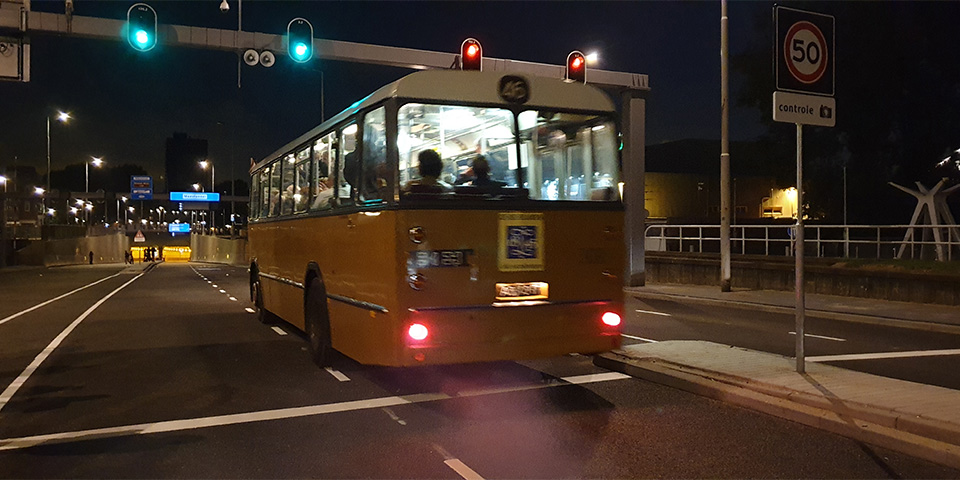
The light turns green and the classic RET tube (line 46 CHARLOIS Boergoense Vliet) enters the Maas Tunnel first.
Monumental character guaranteed in every detail
Very characteristic of the Maas Tunnel is the wall covering. This consists of 614,000 wall tiles. "Nico de Bont had 600,000 of these copied in Spain, 14,000 original tiles could be reused. The result can be seen, it has remained completely true to the original optics," Mooijaart explains. "Every 60 meters an auxiliary post box was installed. These cabinets are concealed in the wall. In order to do that while maintaining a seamless optic, the tile sizes were used as the starting point for the sizing of these cabinets. The tile size determined many components, such as, for example, the signs above the auxiliary mailboxes, the numbering of the escape doors and the intake grilles for the installation that measures air quality."
Another breath of fresh air blows through the tunnel tubes
"You may see that literally and figuratively," Mooijaart suggests. "Of the civilian components, the new ventilation system is also a model of progress. Originally, the Maas Tunnel was equipped with transverse ventilation. That has now become full longitudinal ventilation. Whereas the purpose of transverse ventilation was to refresh the air, longitudinal ventilation has an additional function, namely the removal of smoke in case of calamities. In order to install the fans, we removed part of the ceiling of the tunnel tube, as well as the walls above the ceiling that were between the two press channels left and right and the suction channel in the middle (these were needed for the old transverse ventilation) and finally the roof was removed. Then a completely new roof was poured to create space for the new longitudinal fans."
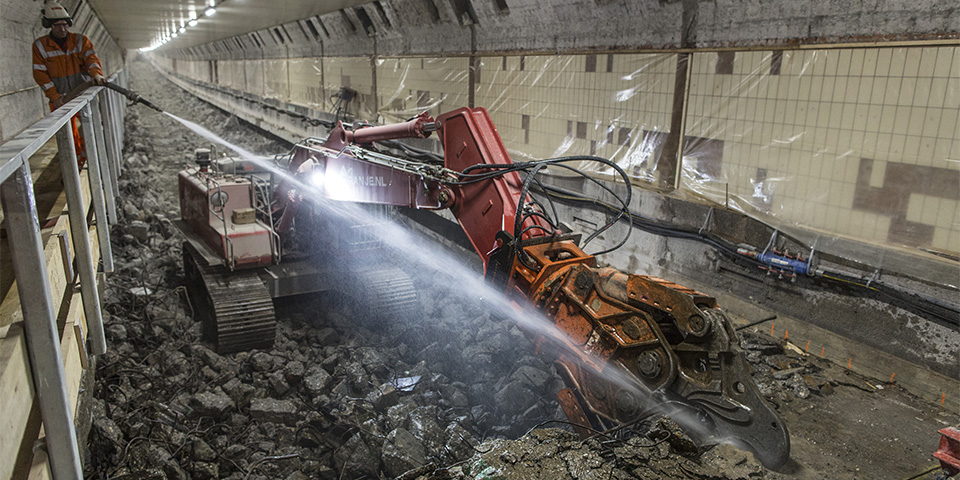
The driving deck in the river tunnel is removed. (Image: Carel van Hees)
New road surface installed
The Maas Tunnel consists of part land tunnel and part river tunnel. The latter was suffering from concrete rot in the channels (serving the cross ventilation) under the driving deck. "The subfloor was affected by thaw water and road salt. This subfloor was removed 15cm deep by hydro-jetting. All rotten concrete parts and rust on the rebar were removed by this method. The subfloor and the walls under the driving deck were completely renewed, then a new driving deck was installed," Mooijaart said.
"What is really unique in the tunnel world is that the work has been carried out tube by tube. The West Tube has been ready for a year (since mid-2018 - ed.). That means that we also got that one under maintenance a year ago. So now the East Tube has been added to that." The maintenance period for CAM is relatively short and runs until the end of 2022. "After that, the maintenance will be transferred to the Municipality of Rotterdam, unless other arrangements are made. What will be done now, after the car tunnel is open, is addressing the bicycle/pedestrian tunnel. With the preparations we are now busy, this is all within the contract with the Municipality of Rotterdam."

CAM received the contract from Nico Bertens, who acted in the role of Craftsman Principal.
A gift to the people of Rotterdam
Thanks to the intensive communication campaigns surrounding the Maas Tunnel, Henriëtte Edens now knows that "her" tunnel has rekindled a flame in the hearts of Rotterdammers as well. "It's incredible what appeal this monumental structure has. Take, for example, the tunnel's birthday on Feb. 14 of this year. Our Old Lady turned 77, on Valentine's Day. To mark the occasion, we partnered with two artists, who transformed the bicycle/pedestrian tunnel into "the tunnel of love. The number of visitors was phenomenal, as many as 80,000 people attended. That gives us as communications department inspiration! The tunnel lends itself to more events, not only in our opinion, but especially if we can believe the reactions of Rotterdammers."
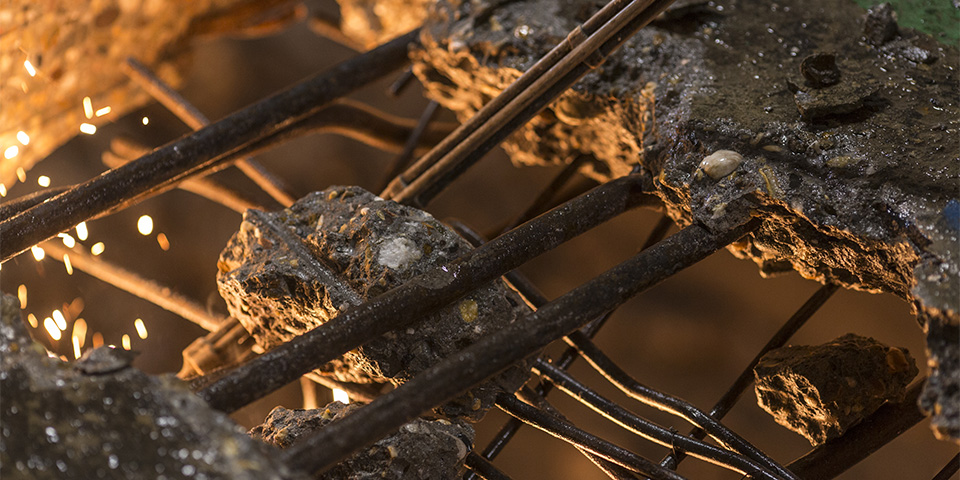
Rotten concrete parts and rust from the iron reinforcement in the subfloor were removed with hydro-jetting. (Image: Carel van Hees)
The first event around the Maas Tunnel will not be long in coming. "Just write October 5, 2019 in your calendar. That is the day on which the City of Rotterdam will officially give the Maastunnel back to the people of Rotterdam. This will happen in a very festive way, through an open day for and by Rotterdammers. That the tunnel will have to be closed one last time... we'll just have to turn a blind eye to that," says Edens, laughing.
Talking afterward, we walked out of the marquee and made our way toward the sidewalk along the road leading to the mouth of the tunnel. The clock has struck 6 a.m. In the distance, we see the first lights of morning traffic looming. Not much later, the first cars drive through the tunnel as usual, honking loudly at the motley crowd waving to them. Two years of intensive reconstruction are over. The morning rush hour gets underway and soon it seems as if the tunnel has never been closed.
